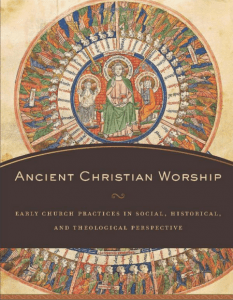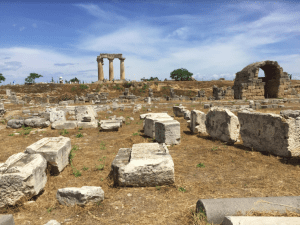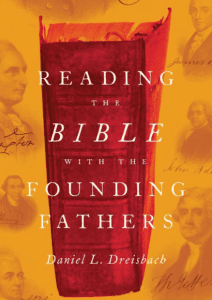 We learn from early Christian worship, not simply because some want to “get back” or “retrieve” the origins but because the earliest churches put into play what was inevitable to put into play. They had to practices certain things because those where the practices that expressed their faith. One could say those practices were their faith.
We learn from early Christian worship, not simply because some want to “get back” or “retrieve” the origins but because the earliest churches put into play what was inevitable to put into play. They had to practices certain things because those where the practices that expressed their faith. One could say those practices were their faith.
In Andrew McGowan’s very fine book, Ancient Christian Worship, we will come across six practices (meal, Word, music, initiation, prayer, and time) and today we want to look at meal.
These Christian meals “were not merely one sacramental part of a community or worship life but the central act around or within which others — reading and preaching, prayer and prophecy — were arranged” (19-20). At the center of Christian worship, he contends, was meals. Meals need to be comprehended in their ancient context.
Acts 2:42-46 sets the tone for the chp.
1.0 Ancient Eating
Banquets, a common term for early Christian meals, were common: “Groups bound by kinship and by professional, social, religious, or ethnic ties celebrated such meals together to create and express their identity and their beliefs when need or opportunity for celebration arose” (20). Thus, they are connected to collegia but especially symposia. The early Christian meals then led into “after dinner conversations” — and this obtains with Jesus in the Galilee too — where apostolic teachings occurred. This is the setting for early Christian instruction, and a good example is 1 Corinthians 14:26-31. Of course, Jewish meals figure in here, too, especially Passover or feast meals celebrated in Jerusalem.
Most meals involved bread and wine (the staples) with side dishes and on rare occasions, meat. However, I’d want to urge us to think that location was important: if a person lived near a lake or a body of water, say the Mediterranean, fish would be common in meals.
Early Christian meals have a common pattern: taking bread, blessing it, and giving thanks to God. E.g., Luke 24:30.
All leading naturally to the Last supper and Eucharist, and he provides a sketch of his interpretation, which is not out of the ordinary.
2.0 The First Eucharists
The oldest setting (outside NT) is Didache, which calls it Eucharistia (chps. 9-10, 14). Notice 1 Cor 11 calls it a deipnon, a banquet meal and after dinner conversation. It was sometimes called “breaking bread” and othertimes agape meal. He thinks the first meals/Eucharsts were a meal (deipnon) and then a conversation/instruction (symposium).
These included prayers. Here is the earliest ordering of the prayer, and it comes perhaps from the middle to late 1st Century (probably the latter):
And regarding the Eucharistia, give thanks [“eucharistize”] thus:
First regarding the cup, “We give thanks to you, our Father, for the holy vine of David your child, which you have made known to us through Jesus your child; to you be glory forever.”
And concerning the broken bread: “We give thanks to you, our Father, for the life and knowledge you have made known to us through Jesus your child. To you be glory forever. As this broken bread was scattered upon the mountains, but was brought together and became one, so may your church be gathered together from the ends of the earth into your kingdom, for the glory and the power are yours through Jesus Christ forever.” (Did. 9.1-4)
[Another prayer follows the meal, see p. 37 in this book.]
Noticeable is an absence of the body and blood themes in these meal ceremonies until The Apostolic Tradition. However, the theme of eucharistia is consistent.
Leaders? Probably from Didache on but surely from Ignatius on … an “ordained” leader led the eucharist. Foods were common: bread and wine but a note of asceticism arises. The most notable development was theologizing the meal, and McGowan only later in this chp brings up the issue of the eucharist as a sacrifice or oblation. And the elements of the meal were understood with startling realism vs. symbolism. Jesus was thus present: how he was present was not clarified yet.
3.0 From Eucharist to Agape
Evidence from Carthage allows a possible reconstruction of this shift, at least in one place. Between the time of Tertullian and his later compatriot Cyprian—in effect the half century between 200 and 250—the eucharistic food came to be received primarily at morning gatherings at Carthage, not at evening banquets where only a fraction of the community could assemble. Tertullian knows of both practices (On the Soldier’s Crown 3.3; cf. Apol. 39), but for him the evening meal gathering is still the primary assembly. For the Carthaginian Christians around 200, the evening gathering was formally an agape, or “love-feast,” but also more loosely a convivium dominicum or cena Dei (“Lord’s dinner party” or “God’s banquet”)—which is the closest any writer of this period comes to reusing Paul’s famous language, but in reference to the whole evening event rather than to the more strictly sacramental aspect, which could be celebrated separately. This was still the characteristic meeting, probably still the (or at least “a”) primary venue for the blessing and consumption of the food generally known as “Eucharist,” and certainly the event that gave rise to rumors about cannibalism and incest (49).
By 300, however, the move is fairly complete and clear: Sunday morning eucharist completed what we would call Sunday morning worship. Along with this is growth in numbers and a shift from homes to larger spaces, to the basilica by the 4th Century.
5.0 Holy Kissing
E.g., Rom 16:16; 1 Cor 16:20; 2 Cor 13:12; 1 Thess 5:26; 1 Pet 5:14.
Surely at least a sign of kinship.
Justin Martyr: “After we have washed the one who has been convinced and agreed, we bring him to those who are called ‘brothers’ assembled, in order to make earnest prayers in common. . . . Having ended the prayers, we salute one another with a kiss” (1 Apol. 65.1-2).” Eucharistic kissing became common.











